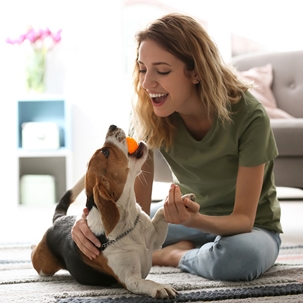Protecting Your Pets: The Science Behind Rodenticide Safety
At Double C Pest Control, your pets’ safety is our top priority. We use science-backed methods and the safest practices to manage rodents in your home. Here’s what you need to know about secondary rodenticide poisoning, how risks differ by active ingredient, and how we keep your household safe.
What Is Secondary Rodenticide Poisoning?
- Primary poisoning: When a pet eats rodenticide bait directly (highest risk).
- Secondary poisoning: When a pet eats a rodent that has died from rodenticide (lower risk, but still a concern).
Risks by Rodenticide Active Ingredient
Active Ingredient | Type | Secondary Risk to Pets | Key Facts |
Brodifacoum | SGAR Anticoagulant | High | Persists in rodent tissue for months; higher risk if multiple rodents eaten. |
Bromadiolone, Difethialone | SGAR Anticoagulant | High | Potent, remains in tissues; risk increases with repeated exposures. |
Diphacinone | FGAR Anticoagulant | Moderate | Requires multiple feedings; less residue than SGARs. |
Zinc Phosphide | Non-Anticoagulant | Very Low | Breaks down quickly; only risky if rodent is eaten very soon after death. |
Bromethalin | Non-Anticoagulant | Low | Limited evidence of secondary poisoning; degrades faster than anticoagulants. |
What Do Independent Studies Say?
- Prevalence: A 2022 study in Frontiers in Toxicology found only 2.6% of dogs and 4.5% of cats showed any rodenticide exposure, and most cases were mild or asymptomatic.
- Probability: No documented cases exist of a pet developing clinical poisoning from eating a single poisoned rodent in a home setting.
- Exposure: Pets would need to eat multiple poisoned rodents in a short period to reach a toxic dose—an unlikely scenario in most homes, especially with prompt carcass removal.
- Ingredient Differences: Second-generation anticoagulants (like brodifacoum) are most persistent and pose the highest risk for secondary poisoning, while non-anticoagulants like zinc phosphide break down quickly and are much less likely to cause harm even if a pet consumes a rodent soon after death.
For more technical details, see the Norwegian study on rodenticide exposures and the EPA/USDA review on rodenticide risks.
How Double C Pest Control Keeps Your Pets Safe
- Secure Bait Stations: All baits are locked in tamper-proof boxes, out of reach of pets and children.
- Careful Placement: Baits are only used in locations inaccessible to pets.
- Carcass Removal: Regular checks and, if able to locate, immediate removal of dead rodents further reduce any risk.
- Ingredient Selection: When possible, we use rodenticides with lower secondary risk, such as zinc phosphide or FGARs.
- Staff Training: Our technicians are trained to minimize all potential risks.
What Should You Do If You Suspect Exposure?
If you suspect your pet has eaten a rodent or is showing unusual symptoms (such as lethargy, bruising, or vomiting), contact your veterinarian immediately and bring any relevant product information.
Learn more about our science-based, pet-safe approach at www.doublecpestcontrol.com.
References:
- Asymptomatic Anticoagulant Rodenticide Exposure in Dogs and Cats—A French and Belgian Rural and Urban Areas Study (Frontiers in Toxicology, 2022)
- Suspected rodenticide exposures in humans and domestic animals (PubMed, 2022)
- Bromethalin and Cholecalciferol Proposed Interim Registration Review Decision (EPA/USDA, 2022)
- The Hazards of Secondary Poisoning from Zinc Phosphide to Predators (University of Tennessee, 1974)
Double C Pest Control—Your science-based, pet-safe rodent control experts.

